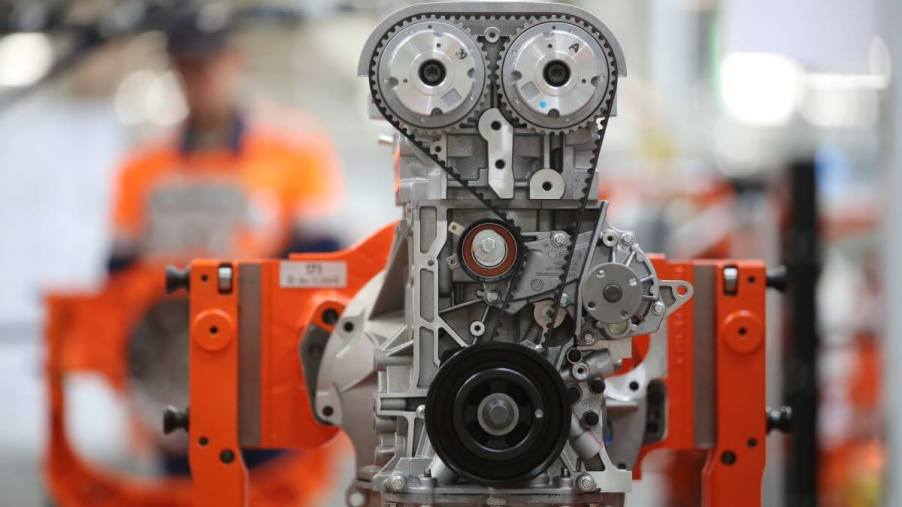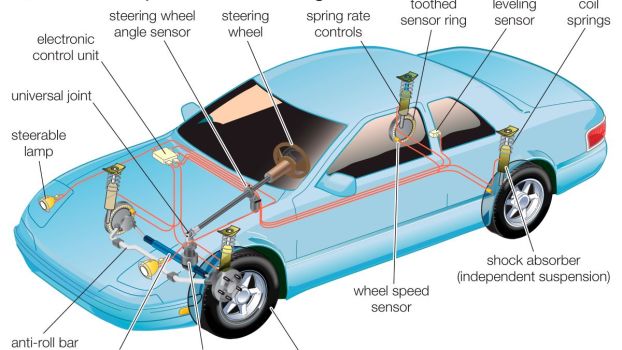
Are Modern Cars Powered by Timing Belts or Timing Chains?
Cars require maintenance to keep their complicated systems operating at the highest possible level. One system many people don’t understand involves engine timing. Engine timing ensures proper compression of fuel/air mixture inside the cylinder and the release of exhaust gases as the piston and valves complete a cycle. Do you know if your car uses a timing belt or a timing chain? Here’s a look at which of these auto parts most modern motor vehicles use and the difference between the two.
Is a timing belt the same as a timing chain?
While timing belts and timing chains are different in many ways, they share some similarities in function and their relationship to other engine parts. Autozone says timing belts coordinate the movements of the engine’s pistons, intake, and exhaust valves. Timing chains perform the same function.
Depending on the engine design, it will employ a timing belt meshed with cogged pulleys or a timing chain and gears. These pulleys or gears attach to the ends of the crankshaft and camshaft(s) so that whenever the crankshaft spins, the camshaft(s) movement remains synchronous. The synchronous activity ensures that the valves and pistons operate within the cylinder without colliding.
How are timing belts different from timing chains?
Napa explains that most cars on the road today use timing belts, but previous vehicle generations relied on timing chains, so how are they different? Compared side-by-side, the visual difference between a timing belt and a timing chain is immediately noticeable.
Timing belts, made from a high-tensile-strength rubber, feature a smooth side and a ribbed or cogged side, with the ribs laying crosswise to the length of the belt. On the other hand, timing chains feature metal construction in a design that resembles a heavy-duty bicycle or motorcycle drive chain.
In addition to their physical appearance and construction differences, timing belts and chains differ in their location on your car’s engine. While both provide the link between the engine crankshaft and camshaft(s), rubber timing belts enjoy a dry environment between the engine case and timing belt cover. In contrast, metal timing chains require the lubrication supplied by the oil inside the engine case, although it’s still accessible via a removable timing chain cover.
Which is better, a timing belt or a timing chain?
J.D. Power says metal timing chains are more durable and less prone to slippage than rubber timing belts. However, replacing a timing chain is more expensive and less DIY-friendly than its rubber counterpart. That’s one of the primary reasons belts are more common in modern cars. Additionally, while the failure of either type could result in valve and piston damage, a failed timing chain or gear could introduce metal shrapnel into your car’s oil pan.
Vehicle After Market reports newer engine designs with timing chains often use weaker chains that stretch, causing timing issues at about 40,000 to 50,000 miles. Meanwhile, more recent timing belt designs can last over 100,000 miles before requiring service.
When should you replace a timing belt?
Unfortunately, WikiHow says most timing belt failures occur without warning signs. The safe route is replacing the timing belt on a schedule your vehicle’s owner’s manual suggests, often every 90,000 to 120,000 miles.
Replacing the timing belt is a relatively simple task compared to other automobile repairs and a moderate DIY project if you’re so inclined. However, it is critical to maintain the relationship between crankshaft and camshaft(s) during the process, and replacing a timing chain is a bit more advanced.
With this new knowledge, you have another item to watch when planning your vehicle maintenance schedule for the upcoming season.




